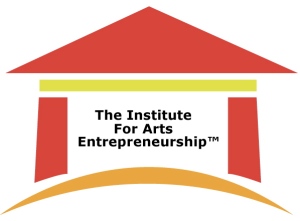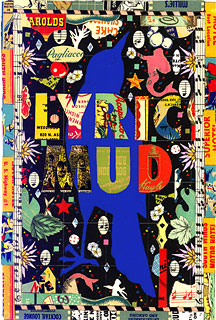
For those of you who read Lisa’s post titled The Blue Angel back in December 2007, then you already know some of my story.
My name is Roxana. I am the Blue Angel.
It took me a long time to find the courage to write this blog post. Not because I don’t want to share with you my journey, or because I know intellectually that sharing my story can possibly help some of you, but because I did not realize what a huge impact my low self-esteem had on my life until now. And, frankly, that all by itself is very hard for me to face.
I’m sure you are wondering, how did my life unravel?
Well, like most artists, I am a very sensitive and intuitive person. I was born this way. And so when my sister became abusive with me at a young age, instead of verbalizing my pain to my parents, I withdrew. I withdrew and denied myself my feelings. You see that is how low-self esteem begins, I am learning. One little denial leads to another and then another and pretty soon I found myself with a lot of denied feelings and needs.
About Me
I did my undergraduate studies at the University of Cincinnati’s College-Conservatory of Music. It wasn’t the experience I had hoped for. Some of my professors were verbally abusive to me repeatedly about my artistic work. I also experienced many classmates who were into drugs, sex and negativity more than they were into finding their creative path in life.
My friends and I were so uninspired at school we use to joke that when we entered the conservatory we checked our souls at the door. But I was use to living in denial and so I allowed it to continue. I expected nothing but negativity from the world. Once the pattern of denial starts, like a ball running down a hill, it is hard to stop. After all, it is hard to stop neglecting your feelings when you are surrounded with negative influences.
After school, eventually, after a couple of attempts to move to places where I could pursue making music, I moved to Chicago to pursue music. Well, that ís what I told myself I was doing, but that is not really what happened. I needed health care. I have to have it because I have narcolepsy and other health concerns. So, I thought the responsible thing to do was to take a day job, just like most of the other artists I know.
I worked long hours for low wages. I had to start saying “no’ to gigs because I was simply too exhausted to travel to the rehearsal or to the gig. The day job began to swallow me whole. I was forced to work through my lunches and work long hours. My superiors were very disrespectful to me. I would barely stick up for myself out of fear of conflict and fear of losing my job.
But hunger is a great motivator. I was so terrified of losing my apartment and being out on the street that I did whatever it took to keep my apartment. I was barely able to pay for rent, groceries, and my medicines. Being stuck in survival mode took away my time to be creative and to do what I love. I was a slave due to my inability to honor my needs and act on them. My denial was filled to the brim.
So of course I fought to keep a day job even though I could not physically handle it. I was barely getting by. Any leftover time was taken up by sleeping. I had hardly any time left of for my music. It was killing me.
One day last year, things got so bad that I took out a payday loan. One month later, I took another one. I was sliding out of control financially. I didn’t have money to eat. I had no money for clarinet reeds. At my work, I would look forward to our luncheon meetings where food was provided for us. I would eat just a little and then portion it out to take home. I would stretch one meal into three. One of my co-workers would periodically buy very large boxes of instant oatmeal packs. When no one was looking, I would stash a few of them away in my desk so that I could eat and get through my day. I hid all of this from my co-workers. I tried very hard to appear professional and calm despite my constant hunger and worry. I got really good at pretending to be awake and nourished.
I do not smoke, drink, or do drugs. I was astounded at how my life was crumbling before my very eyes. I was full of anguish, horror, and anger at myself for not being able to manage my life better. I kept beating myself up with negative self-talk. I was horribly depressed. My self-esteem, like my life, was at rock- bottom. I didn’t know how to change my life or where to turn because it was so wrecked. I never wanted to be seen as a burden on anyone. I fiercely told myself that “it was my idea to move to Chicago and I take full responsibility for myself. I refuse to drag anyone into my situation.” I didn’t want to ask for help. Negativity had a hold of my life my life and began to strangle me and this time, I could feel its hands around my neck.
I was one step away from the street.
Intelligence Does Not Matter
I am very intelligent person, I test well and always got good grades, but my life slid out of control despite my intellect. If you don’t choose what in life you need, life chooses for you, and that ís how it all begins. I see this same thing happening to so many artists friends of mine in their late 20s, 30s, 40s and beyond who are trapped in day jobs, or just barely getting by on low-paying gigs and not fighting to find a new way forward to honor themselves and their artistic work.
But we have no one but ourselves to blame. We, as artists, have created our own third world country by checking our souls at the door one little compromise at a time. A day job, a low-paying gig, a no-paying gig, the list goes on and on reinforcing a negative cycle.
It took me to be figuratively “down on my knees in the gutter” to finally ask for the help I desperately needed. It was only when I finally admitted I had lost my way and turned my hands up to God and asked for help, admitting that I was no longer willing to accept a life as a walking dead person, that my life dramatically and swiftly changed.
The very moment I decided to choose life, and to honor my talents and needs, everything changed from grey to technicolor. Immediately after deciding to let go and to ask for help and trust it would come, I met the writer Tama Keives and Lisa Canning, the very next day. The next morning I saw a single sheet of paper lying on the floor of the bus in front of me that caught my eye. It said ” Trust in God’s Creative Abundance”. The coincidence and irony of a life working were starting to appear before my eyes.
Life Changing Steps
Lisa and I decided to meet once a week at a location that was a halfway point between where we both live. The only place in that area of town that was open for that meeting was an oldrestaurant/diner by the name of “The Blue Angel”, and so now you know how I got my name.
With her help, and the help of a support team of positive people and influences in my life, I worked on a plan to dramatically improve my life. For starters, I quit my job. However before I did we came up with a plan to make my life and financial needs small enough so that I could have enough space and time to think and regroup. I need time and space to realize my own worth.
I also decided I had to cut all the reinforcing negativity and chaos out of my life. That means contact with my sister has stopped as well as relationships that do not support my efforts to flourish. While all of these changes are very positive, they also have been very scary.
But Lisa, along with others on my “A team” of positive influences and support, are helping me to realize my worth and are showing me by example that I too can flourish with my talents. It is amazing how clearly you can see when you start to honor your needs. I am realizing that my low self-esteem was at the root of my problems. So simple and yet so complicated to accept and begin to deal with.
We check our souls at the door by denying who we really are. Low self-esteem grows from blaming others for our unhappiness and by allowing others to shape us in ways we do not wish to bend.
I gave myself permission to enter hell a very long time ago. Very recently, I gave myself permission to be plucked from it. No matter how extreme your situation is, or how deep in denial you are or are not, don’t let a moment pass without choosing life over walking dead. Don’t let a moment pass without choosing nourishment for your soul over both literal and figurative starvation. Don’t ever turn away a helping hand when you really need one. Swallow your pride and take it.
I am embarking on a huge journey-a journey to Self. I am finally allowing myself to be who I truly am, and I am finally beginning to feel true peace. I hope you will walk this road with me.





















